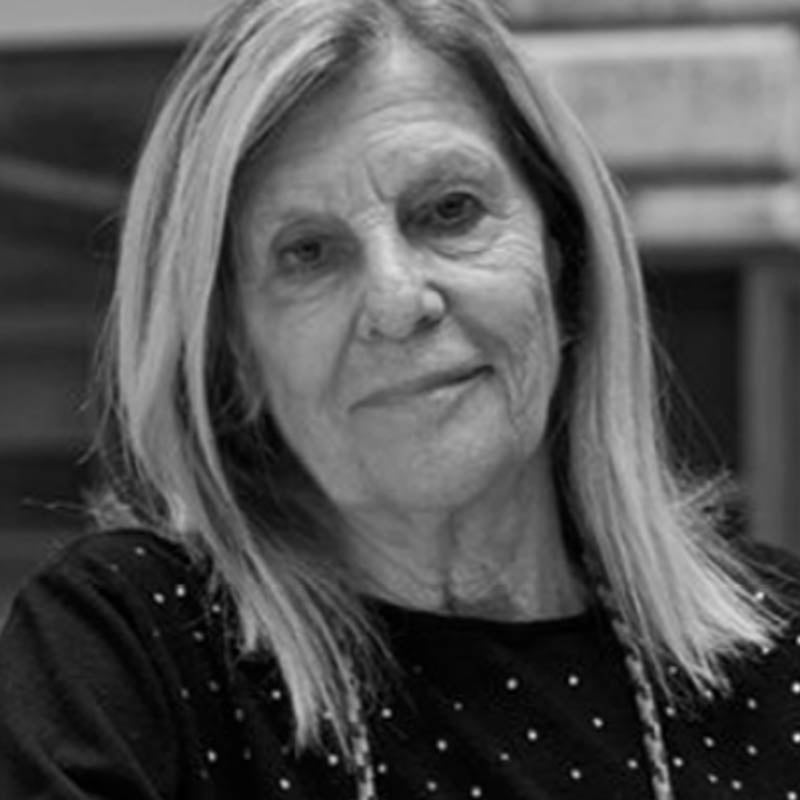Federica Marangoni, born in Padua in 1940 and based in Venice, has made a significant impact on the art world, particularly with her innovative use of Murano glass, which she began integrating into her work extensively after opening her Fedra Studio Design in Venice in 1970. Her career is characterized by a unique fusion of traditional materials with modern multimedia elements, allowing her to explore complex themes such as the interplay of light, the ephemerality of existence, and the dualities of reality and fiction.
Murano Glass and Artistic Innovation
Marangoni’s engagement with Murano glass commenced when she established her studio, initiating frequent collaborations with numerous Murano glass furnaces. This period marked the beginning of her lifelong exploration of glass, not just as an artistic medium but as a pivotal element in her large-scale installations and design objects. Her work combines the clarity and fragility of glass with advanced technologies like neon lighting and video to create unique and thought-provoking pieces. This blend of traditional craftsmanship and contemporary technology has set her apart in the field of contemporary art.
Throughout the 1970s, Marangoni became known for her dynamic installations that incorporate these elements. One such example is "The Electronic Rainbow" created for the 1997 Venice Biennale, which featured polychromatic glass alongside multimedia components to engage viewers on multiple sensory and cognitive levels. This work exemplifies her skill in using glass to mediate complex interplays of light and color, enhancing the viewer’s experience of the themes she explores.
Collaborative Processes with Murano Artisans
The collaborations between Marangoni and Murano glass artisans have been central to her practice. These partnerships have not only allowed her to realize the technical aspects of her visions but have also fostered a continuous dialogue between traditional techniques and avant-garde artistic expressions. Through these collaborations, she has pushed the boundaries of glass art by integrating LED lighting and digital projections, making her works stand out in the contemporary art scene.
Philosophical and Social Dimensions
Marangoni’s installations and sculptures delve into philosophical and social themes, using the transparency and fragility of glass to comment on the transient nature of modern life. Her consistent use of electronic technology since the mid-1970s has become a hallmark of her work, furthering her exploration of light and artifice and the virtual mobility of images. This approach reflects her deep interest in examining the intersections of nature and technology, reality and illusion.
Educational Contributions and Legacy
Marangoni’s role as an educator, particularly during her tenure at New York University, has been instrumental in shaping the perspectives of emerging artists on the use of materials and technology in art. She emphasizes the importance of understanding the historical and cultural narratives embedded in materials like Murano glass, encouraging a deeper engagement with artisanal traditions even in modern artistic practices.
Continuing Impact and Exhibitions
Today, Marangoni recent works incorporating newer technologies that dialogue with her established themes. Her ongoing exhibitions, such as the one currently featured at the Museo del Vetro in Venice, continue to showcase her pioneering use of Murano glass and affirm her significant role in bridging the gap between traditional craft and contemporary art.
Federica Marangoni’s integration of Murano glass into her multimedia art forms has transformed the traditional perceptions of glass, positioning it as a versatile medium in contemporary art.




Laisser un commentaire
Tous les commentaires sont modérés avant d'être publiés.
Ce site est protégé par hCaptcha, et la Politique de confidentialité et les Conditions de service de hCaptcha s’appliquent.